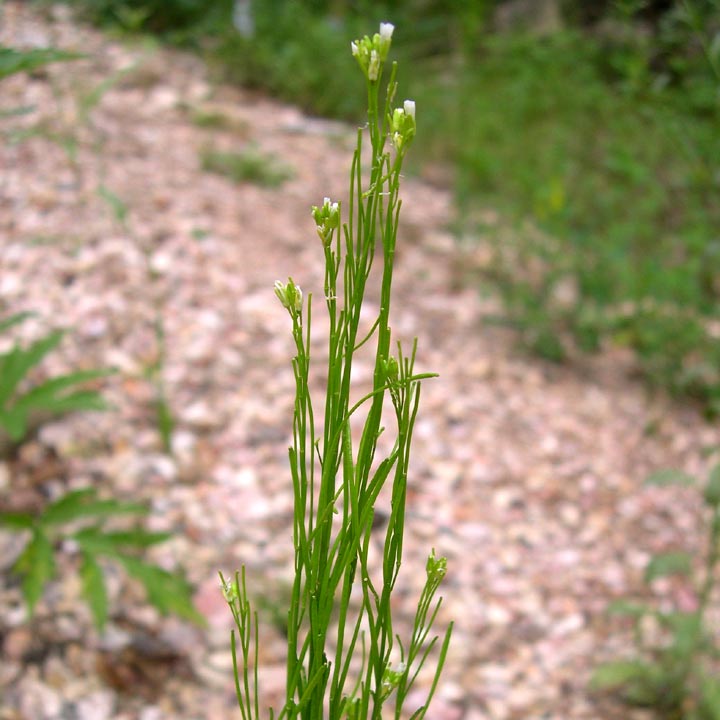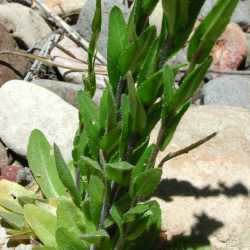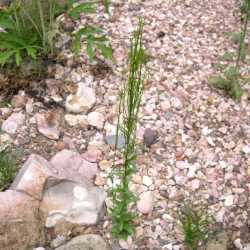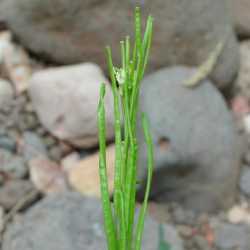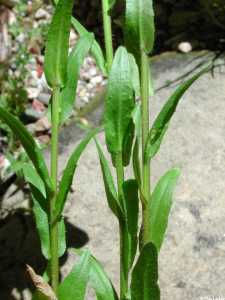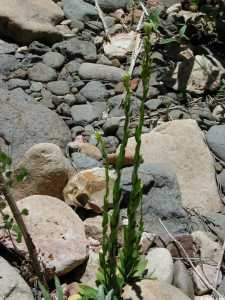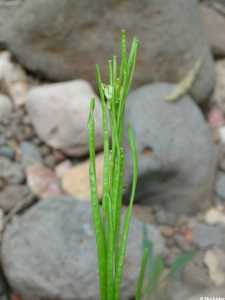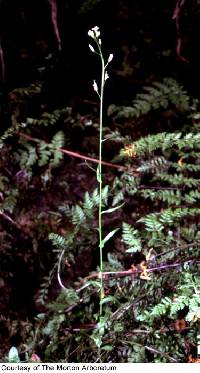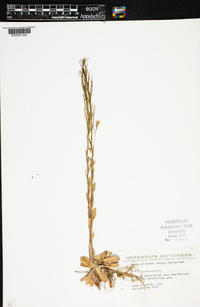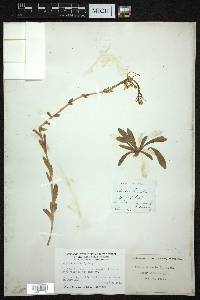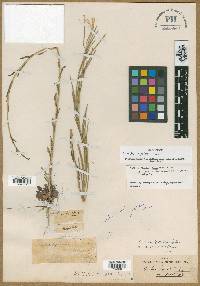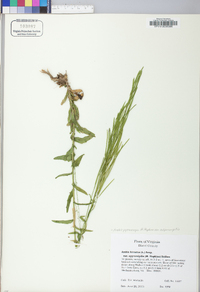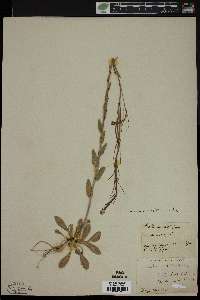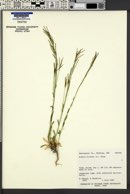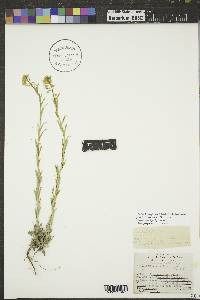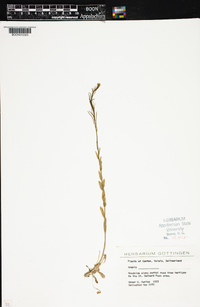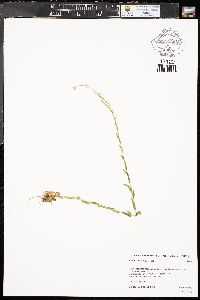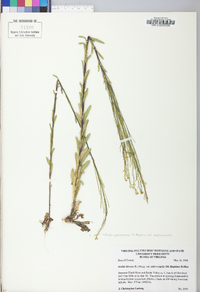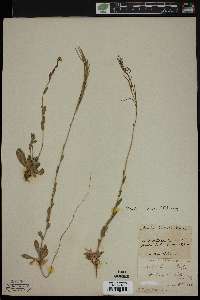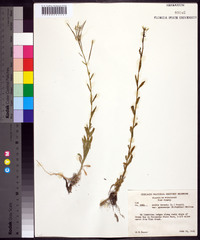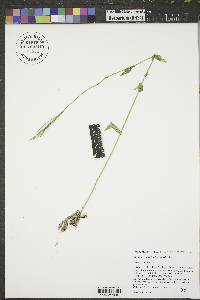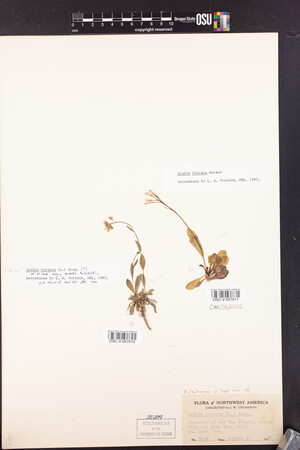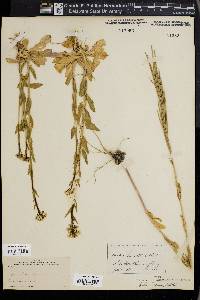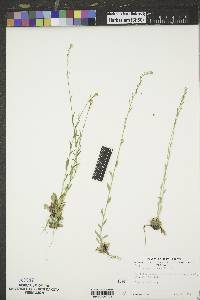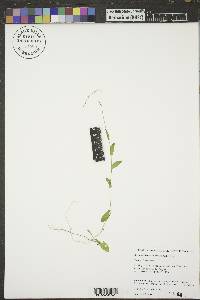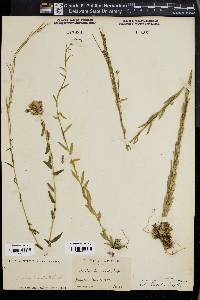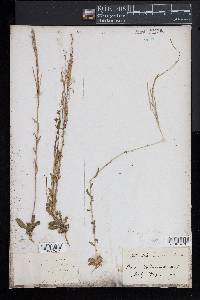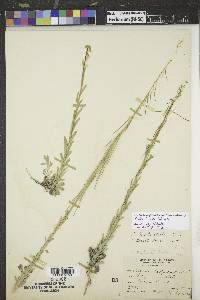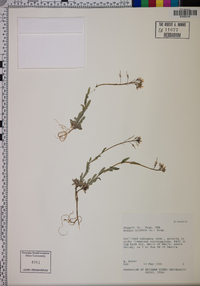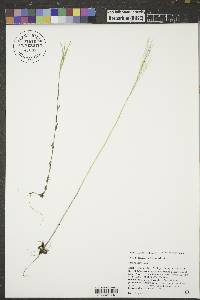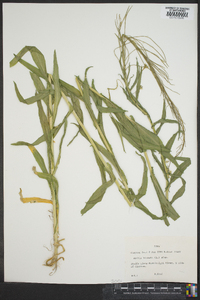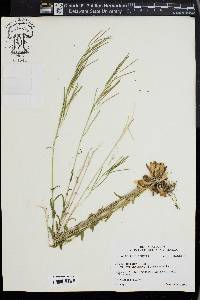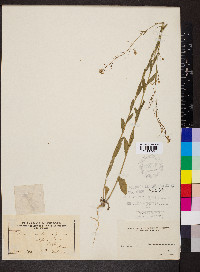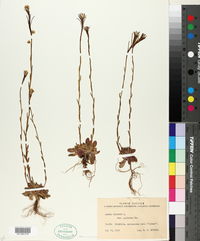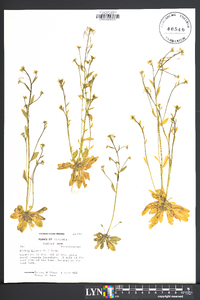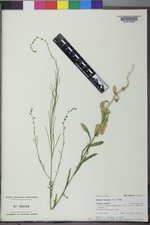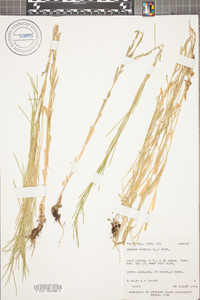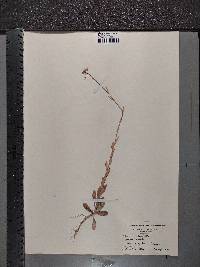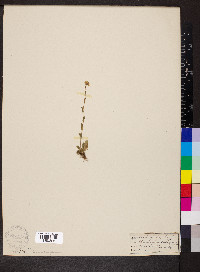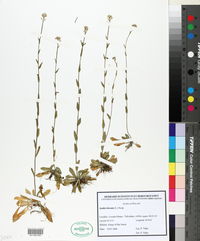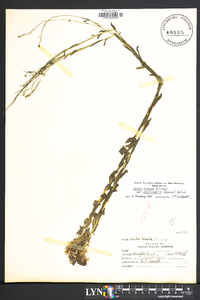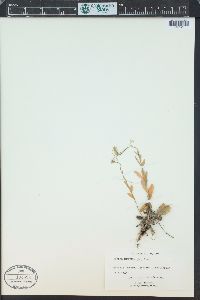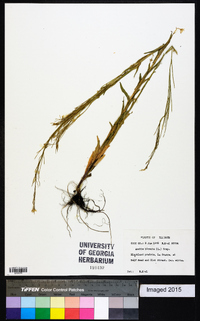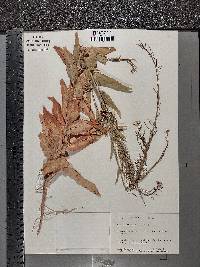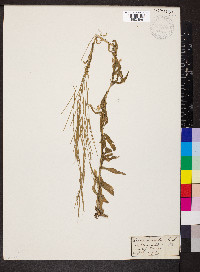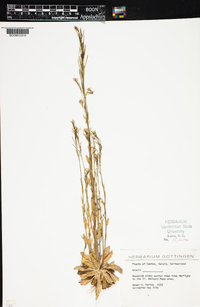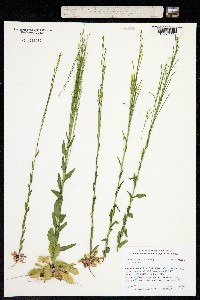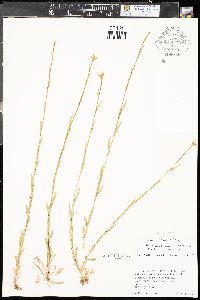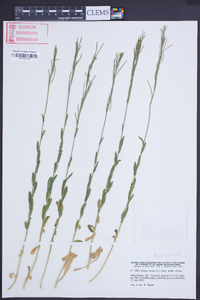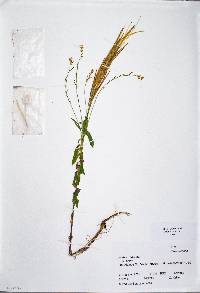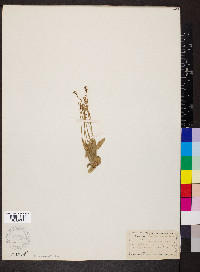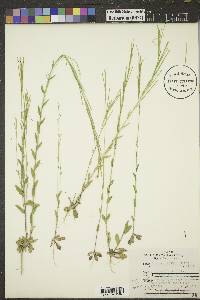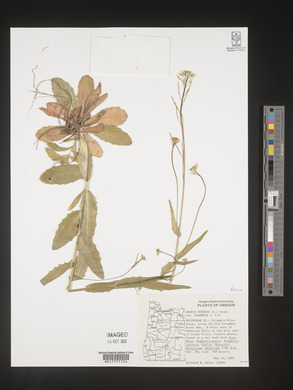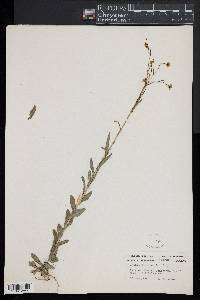Arabis hirsuta
|
|
|
|
Family: Brassicaceae
hairy rockcress
[Arabis incana Roth, moreArabis rupestris , Turritis hirsuta L.] |
Biennial or perennial herb 20 - 80 cm tall Stem: upright and hairy. Usually single but occasionally two or three arise from the base. Flowers: in loosely branched clusters, white or yellowish white, 3 - 5 mm long. Petals four. Stamens six. Fruit: a narrow pod, upright or pressed against the stem, 3 - 5 cm long, 0.5 - 1 mm wide, linear, flat. Seeds in one row. Basal leaves: short-stalked, oblong, hairy, in a rosette. Stem leaves: alternate, upright, clasping the stem, stalkless, 1 - 3 cm long, oblong to lance-shaped, toothed on lower leaves, becoming non-toothed on upper leaves, lower leaves hairy. Similar species: Variety adpressipilis bears appressed hairs. Flowering: mid-May to late June Habitat and ecology: Extremely rare in the Chicago Region because of the scarcity of its special habitats. It grows on shaded, moss-covered limestone boulders along the borders of streams in small rock canyons. It also grows on the vertical walls of limestone canyons. Another habitat is shaded floodplains. In other parts of its range it is found in moist, sandy soil. Occurence in the Chicago region: native Etymology: Arabis comes from the Latin word for Arabia (where some species of these herbs originated). Hirsuta means hairy. Author: The Morton Arboretum General: Biennial or perennial, mostly 20-70 cm tall; stems 1 to several, herbage hirsute or hispid at the base with simple to occasionally forked hairs, usually glabrous above; caudex simple or branched. Leaves: Basal (forming a rosette) and cauline, alternate, simple; basal blades oblong, oblanceolate, or spatulate, mostly 1.5-4.5 cm long, 4-8 mm wide, surfaces glabrous or hirsute with simple or forked hairs, margins sparsely dentate, seldom entire, ciliate; cauline blades oblong-lanceolate or linear, usually smaller than the basal blades, surfaces glabrous or hirsute, margins entire to toothed, base rounded to lobed; basal blades tapering to a winged petiole, cauline blades sessile. Flowers: Inflorescence of elongate, loosely flowered racemes, leafy-bracted, at least in the lower part; calyx 2-4 mm long, the segments lanceolate, appressed hairy; corolla salverform, minute, 1-2 mm wide, white with a yellow throat; flowers June-July. Fruits: Silique, strongly erect and often closely appressed to the rachis, 3-5 cm long, conspicuously flattened, glabrous; seeds numerous, arranged in one row, prominently winged. Ecology: Open slopes, meadows, streambanks, moist habitats, often on gravelly soils; 1800-2700 m (6000-9000 ft); Apache, Coconino, Mohave, Navajo, and Pima counties; Canada, northeast, north-central, western, and southwestern U.S. Notes: Our plants belong to var. pycnocarpa. Boechera stricta (Drummond-s rockcress) [=Arabis drummondii] is a biennial to short-lived perennial, mostly 20-70 cm tall, with herbage glabrous to appressed-pubescent at the base with dolabriform hairs (hairs attached at the middle); basal leaves are oblanceolate to spatulate, 2-8 cm long, glabrous to somewhat pubescent, margins entire to dentate, tapering to a winged petiole; cauline blades are lanceolate, sessile and lobed basally, often clasping; inflorescence is a raceme with erect pedicels; petals are white, occasionally lavender or pink; fruit is a silique, strongly erect and often closely appressed to the rachis, 6.5-10 cm long; seeds are numerous, arranged in 2 rows. It typically occurs on open slopes, in coniferous forests, and in woodlands at 2100-2700 m (7000-9000 ft). Turritis glabra (tower mustard) [=Arabis glabra] is a biennial to short-lived perennial, 40-150 cm tall, stems solitary to few, herbage hirsute at the base with simple to branched hairs, glabrous above; basal leaves (usually withered by flowering) are oblanceolate, 6-15 mm long, coarsely pubescent with forked hairs, margins dentate, occasionally entire, tapering to a winged petiole; cauline blades are lanceolate to ovate, mostly glabrous, margins entire, sessile, basally lobed and clasping; inflorescence is a raceme with erect pedicels, petals yellowish to cream; fruit is a silique, strongly erect and closely appressed to the rachis, 6-9 cm long, slightly flattened to somewhat 4-angled or round in cross-section; seeds are numerous, arranged in 2 rows. It typically occurs on slopes, streambanks, open forests, and woodlands at 1400-2400 m (4500-8000 ft). Editor: Springer et al. 2008 Much like no. 1 [Arabis glabra (L.) Bernh.], 2-8 dm; cauline lvs oblong to lance-linear, 1-3 cm, at least the lower pubescent; style 0.5-1 mm; frs flat, 3-5 cm נ0.7-1.1 mm, the valves 1-nerved to or somewhat beyond the middle; seeds in 1 row, the wing evident to lacking; 2n=32. Circumboreal, with 3 vars. in Amer., as follows: Gleason, Henry A. & Cronquist, Arthur J. 1991. Manual of vascular plants of northeastern United States and adjacent Canada. lxxv + 910 pp. ©The New York Botanical Garden. All rights reserved. Used by permission. |
|
|
|

